Drying clothes outside. Before people had drying machines they washed their clothes and then dried them outside. This is possible because of evaporation (water turning from a liquid into a gas).
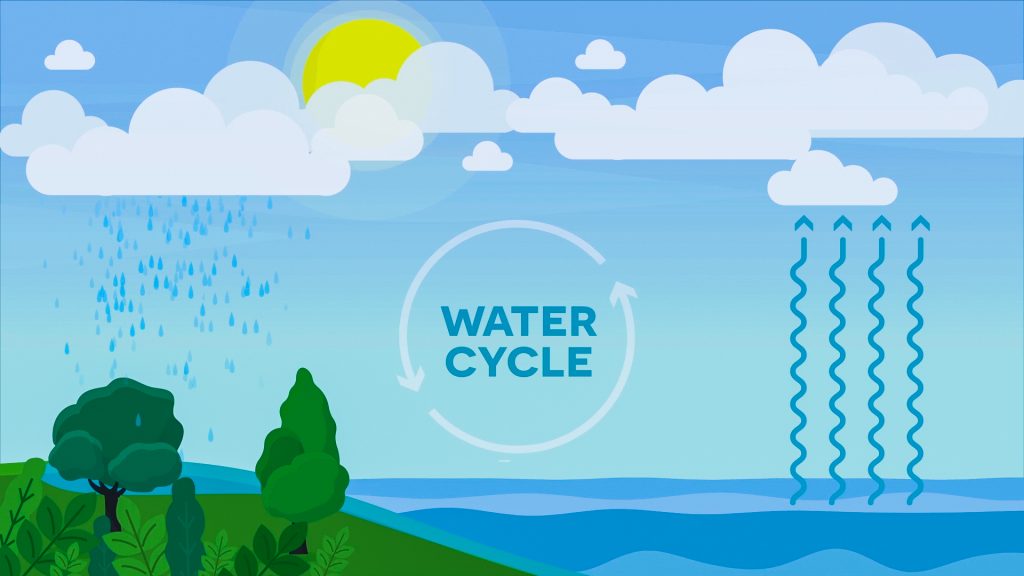
The water cycle is the process of water moving around between the air and land. Or in more scientific terms: the water cycle is the process of water evaporating and condensing on planet Earth in a continuous process. This process has been happening continuously for millions of years and without it, there would be no life on Earth!
To better understand how the water cycle steps work…
LET’S BREAK IT DOWN!
Water Cycle Step #1: Water evaporates from the Earth’s surface.
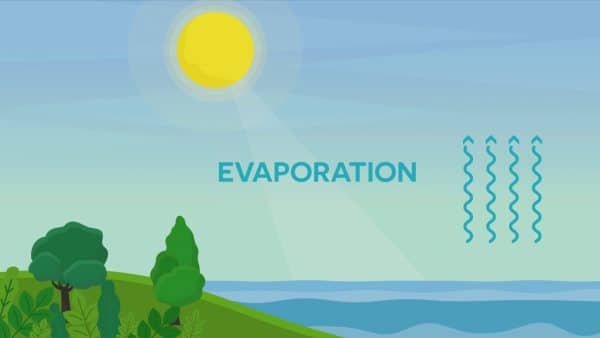
If you spill a glass of water outside you will notice that a few hours later the water is gone! That is because water slowly turns from a liquid into a gas called water vapor. The process of water turning from a liquid into a gas is called evaporation.
Evaporation happens faster on a hot day. That is because the evaporation of water outside is powered by the sun! The hotter it is outside, the faster water will evaporate. Since water in its gas form has no color, we cannot see it. It just goes into the air.
Water Cycle Step #2: Water condenses to form clouds.
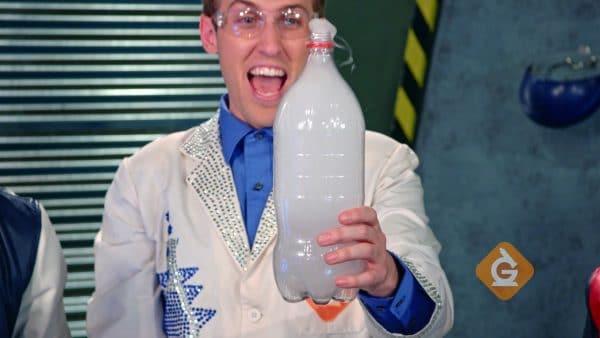
Water vapor rises up in the sky due to the sun’s heat. Once the water vapor rises high enough it condenses into water droplets. Condensation is the process of water turning from a gas into a liquid.
You have probably experienced condensation if you have had a cold glass of water at a restaurant. As the cold glass sits on the table, water vapor from the air condenses into water droplets on the glass. The same thing happens as water vapor rises into the sky – it turns into liquid water.
It’s important to remember that not ALL water condenses to form clouds. Some of it condenses close to the ground to form dew and some of it rises up only a little bit to form fog, but most of it rises high in the sky to form clouds.
Fun fact: Clouds are made of tiny water droplets -- billions and billions of them!
Water Cycle Step #3: Water falls back to the Earth as precipitation.
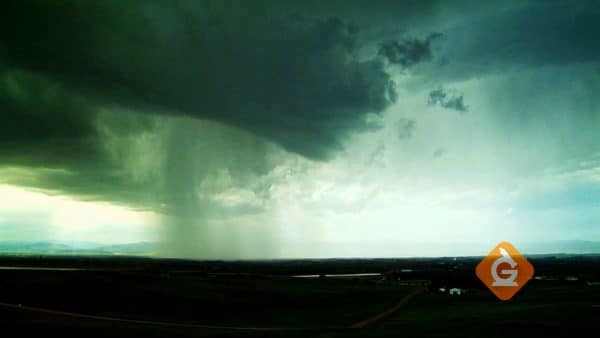
When water droplets get heavy enough, they fall back down to Earth as rain! We call this precipitation because it can happen in a few different ways: rain (liquid water), snow (frozen water), and hail (big pieces of frozen water).
Precipitation brings the water back down to earth and the cycle repeats... the sun shines on the water and it starts evaporating again. This is why we call it the water cycle.
WATER CYCLE EXAMPLES
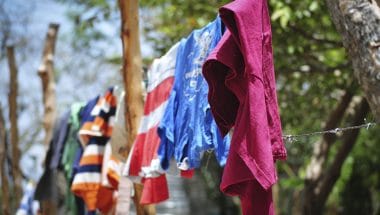
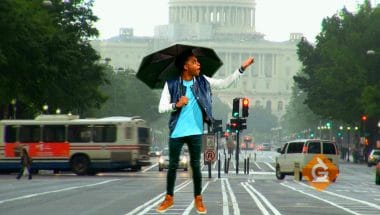
The weather this week. If it rains or snows this week, that’s thanks to the water cycle. Scientists called meteorologists study how water moves around the atmosphere in order to predict the weather.
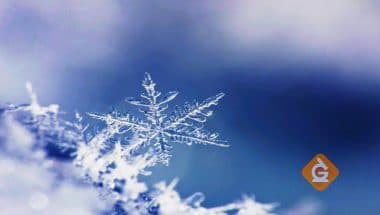
Snow days. The water cycle is not just about rain – water can fall from the sky in many different forms, such as snow and hail. Sometimes you can thank the water cycle when there is no school due to a snow day!
WATER CYCLE VOCABULARY
WATER CYCLE DISCUSSION QUESTIONS
How do we know there is water vapor in the air?
What causes water to change from a vapor to a liquid, or a liquid to a solid?
Does water become cleaner when it evaporates into a water vapor? Why or Why not?
What happened to the dirt and grass in the DIY Solar Bowl investigation when the water condensed on the plastic covering? Why?
What happens in the distillation process?
Skip, I will use a 3 day free trial
Enjoy your free 30 days trial
We use cookies to make your experience with this site better. By using this site you agree to our use of cookies. Click "Decline" to delete and block any non-essential cookies for this site on this specific property, device, and browser. Please read our privacy policy for more information on the cookies we use.Learn More
We use cookies to improve your experience. By using this site, you agree to our use of cookies. Click "Decline" to block non-essential cookies. See our privacy policy for details.Learn More






